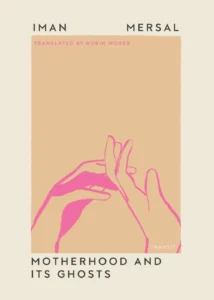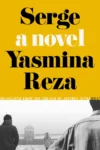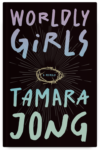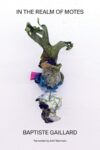
[Transit Books; 2025]
In four sections that utilize different literary forms, including, diaries and literary analysis, Iman Mersal’s Motherhood and its Ghosts, translated by Robin Moger, tracks Mersal’s shifting relationship with motherhood. Through larger cultural narratives of motherhood, this book thinks through what mothering and being mothered have to do with exile and geographical displacement. Mersal lost her mother as a young child, shortly after the first and only photo of the two of them together was taken. This photo is the point of departure for these essays.
Fragmentary but never disorienting, the book tracks, across a long period of time and reflection, how Mersal’s relationship to her mother changes over the course of her life. Forced into memory after becoming a mother herself, Mersal seeks to arrive at an understanding of who her mother was in order to understand who she will become. Moving between the critical and the personal in subsections that are deftly braided together, Mersal articulates herself with a precision and clarity that are a direct contrast to the more ambiguous thematic concerns of the book.
In the first of four sections, using a critical rather than personal register, Mersal draws on larger cultural understandings of motherhood. In doing so, she situates for us the larger histories she writes into and out of, making clear that her interest in thinking through this experience extends beyond the limits of that singular photograph at the heart of her inquiry. She opens with her reading of a poem titled “Maternity” by Anna Swir, a Polish poet, in which, Mersal notes, “a child’s arrival threatens the life, the very existence, of her mother [.]” Mersal reads the primary affect of the poem as “rage.” At the outset, Mersal’s project is to hold space for varied experiences of mothering that exceed what we as readers might come to the page with. Mersal bridges this literary reading with a larger psychoanalytic frame, too. On the following page, as she situates us in the cultural valences of motherhood, Mersal writes: “This conflict between mother and child lies outside the grand narrative of human experience in which motherhood conventionally means giving, the melding of two distinct selves, a love unlimited and unconditional.” Much like her close reading of Swir, this reading of a larger historical narrative of what motherhood means, is precise and direct. Mersal’s clarity of prose allows her to move through these complicated affects without obscuring them further.
Building on this larger cultural understanding of motherhood, Mersal later writes:
How to see that a motherhood branded as purely altruistic and sacrificial might also harbor selfishness and profound feelings of guilt? How to understand it as an existential struggle, a tug of war between one self and another, and as an experience of connection and separation played out in many rites of passage, such as birth or weaning or death?
This clear articulation of the contradictions of motherhood is what Mersal seeks to examine. She does not seek to arrive at a fixed conclusion of motherhood as a concrete feeling or experience, but instead as a set of possibilities. From the fixed image of the photograph that has haunted her through the years, Mersal articulates her desire to understand motherhood as almost the opposite of what a single image contains: motherhood is dynamic and always in flux.
In this section, after opening in a critical register, Mersal switches back and forth into diaristic asides that document in fragmentary vignettes her anecdotal, personal experiences of being pregnant with her son and of his early childhood and her experience of it. In one of these asides, Mersal discusses group therapy sessions she attended for postpartum depression living in Canada, away from her first home and family. These sessions, she notes, were populated by a small group of other mothers who she felt distant from in how they experienced structures of care and family support; the only person here she feels understands her experience of motherhood is an Iranian doctor, also in diaspora. Of her, Mersal writes:
I realized that, regardless of the efficacy of group therapy or the institution which ran it, she and I could not feel secure because we had entered into this experience while we were far away from our families; because, in our exile, there was a frame of reference that we lacked.
Here, in this moment, Mersal draws our attention to the relationship between place and mothering and being mothered. All three become intertwined with one another, making the tangible experience of place central to the more abstract experience of motherhood as it exists in relation to the everyday of motherhood. This experience thereby is fundamentally different for Mersal than how the structures of care in Canada understand it — well-meaning networks of support fail to recognize her experience of motherhood and all it entails. This darker experience of motherhood is mediated by a geography that she has not herself been mothered in. As she attempts, in following her doctor’s directions to attend the support group, to transcend that geographical distance, she remains still always aware of the sense of impossibility inherent in it, the perpetuity of motherhood, daughterhood, and exile all converging for her in this moment of solidarity.
Beginning in the second section, “How to Find Your Mother in her Portrait,” Mersal takes us back in time to examine her own understanding of her mother. The one ghostly photograph an obsessive function: it becomes an artifact that haunts Mersal perpetually. Unable to remember as much as she would like to about her mother, the one photograph she has of her remains for Mersal the means through which she might finally be able to recognize her mother. The photograph, in Mersal’s reading of it, is the object through which her mother is trapped in time, but also simultaneously the means of an impossible recognition. The photograph is a unique, singular object that articulates a false sense of her mother, having been taken in a studio. This fact of it not having been taken in the real lived environments Mersal and her mother occupied thereby allows the photograph to become a map. This function of mapping allows Mersal to understand a converging past and present and future, her experience of being mothered as well as her experience of motherhood. Mersal writes:
To the little girl that was me, this portrait happened to be a document of the first and last time I had stood beside my mother in a studio, unaware that in less than two months’ time, she would be dead. That photograph must be a means of instruction, an exercise in recovering the features and presence of my mother…
The photograph is singular in its temporal frame. It holds not just a version of her mother suspended in time, but also the only version of her mother she knows, a convergence of both her mother as a real person but also the fiction of the photograph. Shortly after, Mersal asks: “Or is it impossible for her to exist anywhere other than outside the frame — and never within it?” Here, Mersal’s question gets at the central, impossible tension of this investigative project: the photo is a map to unlocking her mother, but the photograph itself fundamentally cannot contain her. The dual possibility and impossibility, in Mersal’s voice, becomes the center of Mersal’s readings in this book. It becomes something that, rather than only becoming a scaffolding of Mersal’s personal narrative, is also a central concern of hers as she engages in her critical readings of other photos and poems too.
Alongside this personal reflection, Mersal also thinks through the larger scale questions of motherhood as it is haunted by the documentative nature of photography. Beginning with the movement of the Madres de Plaza de Mayo in Argentina, and moving onto images of Palestinian mothers amidst the ongoing genocide in Gaza and Palestine, Mersal’s study of motherhood necessarily situates the phenomenon as not only a private, familial relationship. In Mersal’s hands it becomes vitally political, forcing us to consider the relationship between spectatorship and motherhood. Connecting this to her investigation coming out of a photograph, Mersal writes: “Everyday there is a new, iconic image depicting motherhood as a victim of war, dictatorships, exile, and patriarchy.” Mersal’s use of the word “everyday” as the framing of this sentence makes clear the stakes of motherhood for Mersal: it is something routine, but simultaneously something that in being read culturally as unknowable and private, turns into spectacle, exacerbated by the gaze of the camera. In Mersal’s reading, motherhood is both everyday and unknowable, both tangible and abstract. Only in being both can it be productive, capable of holding the dynamism she desires in contrast to a photograph.
In the last section of the book, “How to Walk the Road of Mourning,” Mersal turns her attention to her mother’s passing. Rooted in matrilineality, Mersal writes about her grandmother, who outlived her own daughter: “As soon as they had closed up the grave with wet cement and inscribed it with the name of my mother, the dates she was born and died, my grandmother became another woman, one I’d never seen before.” Here, Mersal’s image of the cement and the grave combined with the affective experience of loss as fundamentally transforming her grandmother is particularly evocative, conjuring up a sense of foreclosure. Mersal brings us back to the tangible experience of loss, not only for herself: Mersal lost her mother, and her grandmother lost a daughter. Their lives converge here, across time and space, connected by this death.
Towards the end of the book, Mersal thinks through her own experiences with language, such as of mothering in a language that is not her first language. She considers effects of this on her experience of mothering while also engaging with her grandmother’s role in her understanding of motherhood. Mersal asks of her own experience as a mother: “How can I sing to [my children] in an accent that sounds as though two languages are battling it out behind each word? But who says that accent alone is what turns happy songs sad? Don’t, say, the sad rhythms or my grandmother’s elegies and nighttime lamentations creep into my voice as I sing my boys a song in another tongue?” Bridging both a generation and spatial gap, Mersal centers the inheritances of self, memory, place and language despite geographic distance and familial loss. Linguistic displacement, Mersal insists, does not foreclose the familial inheritances one carries. Her mother, as she understands her now, might exist only in that impossible moment of the photograph and its frame. But Mersal still recognizes her matrilineal inheritances, can understand how her mother was mothered. In this articulation, then, an impossible recognition becomes possible, despite the feeling of foreclosure her mother’s early passing created. In language, as a complement to photograph, the matrilineal inheritances she carries become knowable. By centering motherhood in relation to the world rather than solely an individual and interpersonal relationship, Mersal makes the photograph a window into a life, no longer a suspended frame, trapped it time. It becomes the lens through which Mersal can reach back into history, place, and time. Through recognizing both her mother and her grandmother, Mersal can articulate a new mother-self anchored by a past, present, and future experience of mothering and being mothered.
Vika Mujumdar was born in New Jersey and raised in Pune, India. She holds an MA in Comparative Literature from UMass Amherst, where she is currently an MFA student in Fiction. Her work has appeared in Public Books, the Cleveland Review of Books, the Chicago Review of Books, the Brooklyn Rail, and elsewhere. She edits Liminal Transit Review.
This post may contain affiliate links.






